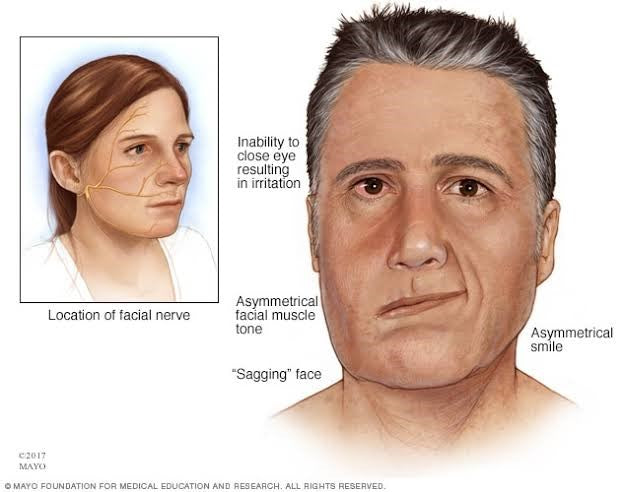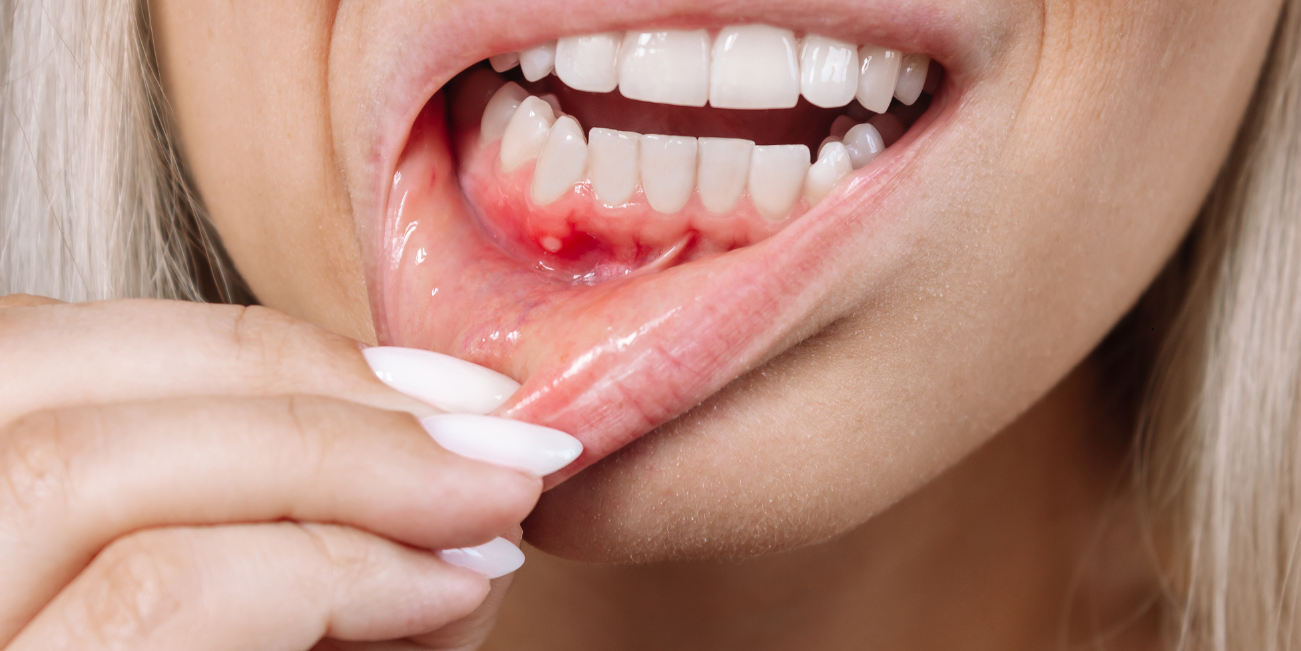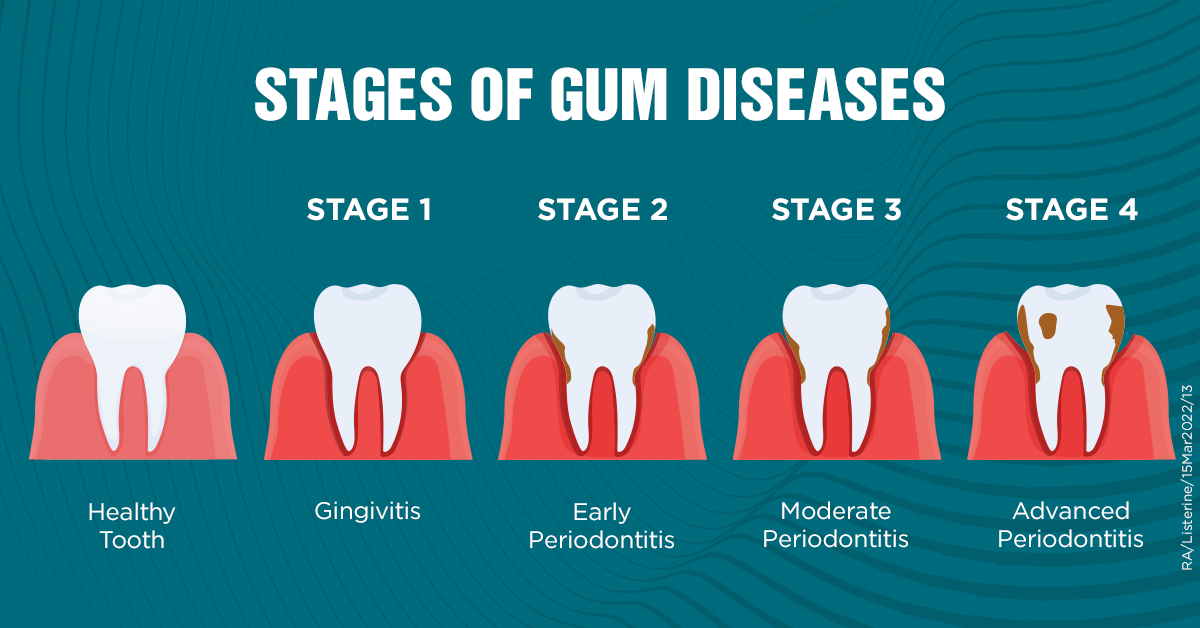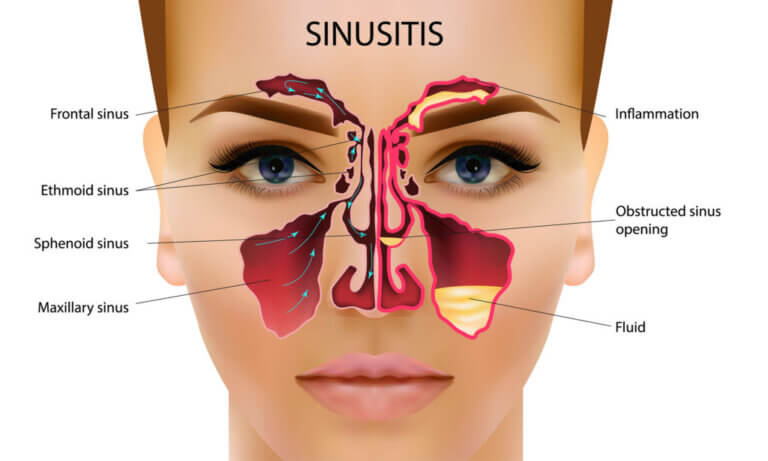What Is Bell’s Palsy?
Bell\’s palsy is a pathological state in which the muscles of the face get weak and become paralyzed due to the least working power in them. The disease has been provided with certain names as Bell’s palsy, facial palsy, idiopathic peripheral facial palsy, and cranial mononeuropathy, etc. The origin of the weakness travels towards the nerve that controls the facial muscles, the seventh cranial nerve of twelve nerves. This nerve becomes swollen, inflamed, and compressed due to which the control impairs and the action potential is unable to reach facial muscles. Continuous absence of dominating power of facial nerve cause drooping of one side of the face or causes stiffness in facial muscles.

The drooping or stiffness imparts negative effects not only on facial features but also on the normal physiology of facial muscles as you may start feeling difficulty smiling or closing your eye on the affected side. Bell\’s palsy can occur at any age irrespective of gender between ages sixteen and sixty. Scottish anatomist Charles Bell was the first person to describe the clinical condition and outcome of Bell’s palsy, named after him.
Typical signs and symptoms of Bell\’s palsy may range from disabilities on one side of the face to both sides of the face. These symptoms may include drooling, difficulty eating and drinking, an inability to make facial expressions as smiling or frowning, muscle twitches in the face, dry eye and mouth, sensitivity to sound, headache, irritation of the eye on the involved side, and sometimes both eyes get affected.
Causes Of Bell’s Palsy:
There can be several reasons and causes of Bell\’s palsy. The possible causes range from lung infections and facial muscle strains to respiratory illnesses. The possible causes of Bell’s palsy may be:
Herpes simplex virus: Commonly known as herpes, it causes cold sores and genital herpes. Genital herpes and blisters are the outcomes of the infection. The HSV-1 and HSV-2 are the two types of infections that are caused by the virus. Many complications follow the infection as meningoencephalitis, hepatitis, retinal necrosis and pneumonitis, Bell\’s palsy.
Human immunodeficiency virus: The immune system of the body weakens down due to several viral infections. The HIV viral attack destroys the immune system of the body and causes immunodeficiency ultimately making the body prone to all types of viral attacks.
Sarcoidosis: An inflammatory disease that affects lungs and lymph glands and other multiple organs in the body. Inflamed tissues containing abnormal masses or nodules are formed in certain organs of the body. The normal structure and functions of the vital organs changes due to granulomas. Enlarged lymph glands, enlarged liver, arrhythmias, pericarditis, heart failure, bell’s palsy are the few symptoms of the infection. It is also an autoimmune disorder.
Herpes zoster virus: An infection of the nerves resulting in a painful rash of small blisters on any part of the body. The pain may continue for months even after a rash is gone. When the immune system is lowered especially at the age of fifty and above, or the chickenpox virus may have lied dormant in certain nerves of the body for many years, then the infection due to Herpes zoster virus causes the disease.
Epstein Barr virus: The virus that causes mononucleosis is called Epstein Barr virus. The symptoms range from fatigue, fever, lack of appetite, weakness, and soreness of muscles causing Bell\’s palsy. Teens and children have more obvious symptoms.
Lyme borreliosis: Lyme borreliosis is a vector-borne infectious disease caused by Borrelia bacterium and is spread by ticks. Fever, headache, skin rash are the typical symptoms of the infection.
Continuous stress: Long-term stressful situation renders disturbed life pattern as a sleep disorder, digestive disorder, periodical disorder, muscular disorders, strain over certain body parts, etc.
Coxsackievirus: These are RNA viruses that cause hand, foot, mouth diseases and a few relate to diseases of lungs, muscles, and heart too. Mostly it occurs in children but sometimes can occur in adults too. Skin rash, malaise, fever, and sore throat, etc are the few symptoms of the virus that affect facial muscles to causing drooling and Bell\’s palsy.
Rubella: Rubella or German measles or the three-day measles is a contagious viral infection causing distinctive red rashes on the skin affecting the skin of the face too.
Mumps virus: Fever, malaise, muscle pain, and drooling are the few symptoms of mumps virus that may affect the patient with the ultimate outcome as Bell\’s palsy.
Symptoms Of Bell’s Palsy:
Preceding the eye infection, ear infection or cold attack, the symptoms of Bell’s palsy develop one to two weeks after the attack. The symptoms appear quite abruptly and you don’t notice them until you get up in the morning or try to eat or drink something. Usually, the patient has a droopy appearance on one side of the face and you become unable to open or close your affected side. Sometimes face becomes affected on both sides. The most common signs and symptoms of Bell’s palsy are:
- Drooling of the face: Impaired neuromuscular control of the muscles around the mouth leads to weakness of muscles and unintentional spillage of saliva from the mouth appears.
- Difficulty eating and drinking: The patient faces a lot of trouble opening his/her mouth due to disturbance in the nerve containing information to the facial nerves and muscles. Due to nervous impairment, the patient feels unable to apply pressure to eat or drink properly.
- Inability to make facial expressions: Due to impaired muscular movement, the patient becomes unable to make proper facial expressions as smiling or frowning, or other facial expressions.
- Facial weakness: The face muscles become weakened due to impaired nervous control.
- Muscle twitching in the face: The ongoing and impaired connections between muscles of the face and nervous tissues controlling these movements cause twitching of the facial muscles which causes inabilities of movements as well as facial expressions.
- Dry eyes and mouth: The mouth and eyes become dry due to impaired muscular connections between the control system of the brain and the muscles of the face.
- Headache: The muscles of the face and head have common pathways. The nervous pathways connecting muscular tissues of the face and head become disrupted and headache is the direct outcome of the situation.
- Sensitivity to sound: The patient becomes oversensitive to sound due to infection spreading to the ear
- Irritation of the eye on the involved side: The eye of the involved side becomes extra sensitive and irritates a lot. The muscular impairment due to nervous impairment causes decreased blood flow to the eye and thus irritation occurs. The eyesight also becomes affected.
The Risk Factors Of Bell’s Palsy
The Bell\’s palsy can occur as a secondary outcome with many underlying diseases and infections. Recently along with other underlying diseases which increase the risk factor for the occurrence of Bell\’s palsy, one of the most significant underlying problem is diagnosed as novel coronavirus, COVID-19. Many patients coming to clinics and hospitals with COVID-19 positive have been diagnosed with symptoms of Bell\’s palsy. Other underlying problems which increased the risk factors for Bell\’s palsy are:
- Pregnancy: Since the immune system of the body becomes compromised due to changes in hormones level due to pregnancy, so the risk of developing Bell\’s palsy becomes high during pregnancy due to weakness and decreased immunity.
- Diabetes: Diabetic patients have an immunocompromised state and thus the body is already weak. The muscular weakness imparts great weakened blood flow and impaired nervous control of facial muscles increasing the risk for development of Bell\’s palsy.
- Lung infection: The infections of the respiratory system and lungs cause a weakened immune response of the body and thus imparts impaired nervous connection between nerves and muscles.
- Family history of the condition: If the patient has a family history of the same condition, then the risk becomes double to develop the condition of facial muscles twitching or impairment.
The Etiology Of Bell’s Palsy
The Bell’s palsy accounts for sixty to seventy percent of all causes of unilateral facial paralysis. It is the most common cranial nerve paralysis. Although we need to understand the etiology and pathophysiology of Bell’s palsy to a greater extent with upgraded knowledge and experiments. Several predisposing factors that manifest Bell\’s palsy are fatigue, cold, decreased resistance, and immune deficiency. According to many studies, Bell\’s palsy is the outcome of immune response after viral infection. It may be the result of autoimmune demyelination occurring one to two weeks after infection.
The hypothesis is endorsed by the HSV-1 genome found in the endoneurial fluid from the facial nerve of patients with Bell\’s palsy. Seasonal prevalence and few other characteristics of Bell\’s palsy are consistent with a viral infection. COVID-19 has a number of associated symptoms of respiratory illness, gastrointestinal disturbances, cardiovascular symptoms, and neurological disturbances. A number of cases reported positive with COVID-19 have also been found to have complications of acute cerebral infarction of right corona, encephalitis with confirmed presence of SARS-CoV-2 RNA in cerebrospinal fluid of patient by gene sequencing, etc. These cases gave the benefit of doubt to the presence of neurological symptoms and neurological manifestations especially in asymptomatic patients or in patients with mild infection.
The human receptor for COVID-19 is an angiotensin-converting enzyme (ACE) that exists in the skeletal system and nervous system and COVID-19 binds with ACE2 triggering functional changes in the receptor and creates an imbalance in the cytokine regulatory axis and cytokine storm. Through the direct or indirect mechanism, the facial nerve damage can be attributed to an immune response caused by SARS-CoV-2. Bell’s palsy is known to be closely associated with virus infection and is the most common cause of peripheral facial paralysis. The symptomatic manifestations of Bell’s palsy pain in the mastoid region and facial hemiparesis.
The Bell’s palsy may have no complications at all or sometimes may be associated with a number of complications as:
- Damage to the seventh cranial nerve occurs that controls the facial muscles.
- Excessive dryness in the eye occurs that leads to eye infections, ulcers, eyesight disturbances ultimately leading to blindness.
- Synkinesis, a condition in which movement of one part of the body causes involuntary movement of another part of the body, as the eye may close when you try to smile indicating the involuntary movement of the eye with the movement of muscles of the face to give smile expressions.
Treating Bell’s Palsy
Home Treatment Available For Bell’s Palsy:
The symptoms and signs of Bell\’s palsy can be managed and ameliorated by a number of treatment strategies. These strategies can be used by yourself to relieve the symptoms to a large extent. The DIY include:
- An eye patch: An eye patch can be used for dry eyes since dry eyes can be very cumbersome for the patient. The eye patch can create a disturbance, eyesight issues, light sensitiveness, and irritation. The eye patch creates a soothing effect for the eye.
- Warm moist towel: A warm moist towel can be placed on your face to provide warmth and a soothing effect on the face. It may relieve temporary symptoms of facial twitching and weaknesses.
- Facial massage: Facial massage along with acupuncture and acupressure creates a soothing effect on the facial nerves and relieves twitching of muscles and pain in the muscles of the face.
- Physical therapy: Physical therapy stimulates facial muscles to increase the blood flow and creates a soothing effect on the face. The facial muscles once rubbed and applied pressure create a soothing effect.
- Repeated closure of the eye: During the awakening time, use your finger to repeatedly close your wide-open eye to reduce the opening time of the eye and to make muscles habitual to closure again so that the muscle gets some rest too.
- Eyeglasses: Since the eye becomes oversensitive to light and glitter of sunlight, so it is much better to wear glasses during the day to protect the eyes from light and keep it protected from the sharpness of sunlight.
Medications Available For Bell’s Palsy:
The medications and over-the-counter drugs are available for the treatment and relieving of symptoms. The medications include:
- Corticosteroid drugs: The drugs containing steroids are corticosteroids that may help to reduce the muscle twitching and paralytic effects on the facial muscles.
- Anti-viral or anti-bacterial: The drugs working against viruses or bacteria are used to counter the effects of bacterial or viral infection giving relief to the symptoms of infection.
- Pain relievers: Over-the-counter pain killers as ibuprofen or acetaminophen are used to relieve the pain associated with muscle twitching.
- Eye drops: The lubricating eye drops available over the counter helps to reduce pain and irritation of the eyes on the involved side where Bell’s palsy causes dryness and drooling.
Alternative Therapies Available To Treat Bell’s Palsy:
The medications and over-the-counter drugs are available for the relief of symptoms of Bell’s palsy but the alternative therapies available can be used to counter the effect of Bell’s palsy. These therapies include:
Acupuncture: The technique of acupuncture involves the placement of thin needles into specific points of the body and skin that help to stimulate your nerves and muscles to get some relief from the deadness of muscles.
Biofeedback training: Biofeedback training helps you and teaches you to gain control over your thoughts and then control your body’s movements through this biofeedback mechanism.
Surgical treatment: Previously decompression surgery was used to relieve the pressure on facial nerves and muscles by decompressing the compressed portions of the affected nerves and muscles. But today the technique is considered obsolete, since it may create permanent damage to the ears or any other sensitive part of the face.
Exercises To Help Bell’s Palsy
A number of exercises and massage treatment patterns are to be followed to treat Bell’s palsy. They may help to gain strength in the drooling muscles and may regain facial coordination from temporary facial paralysis. The symptoms may get relief and the patient may become able to eat or drink something easily. These may include:
Facial stimulation: Facial stimulation or any type of exercise must be started after getting warm up and stimulating your muscles at first. Experts suggest sitting in front of the mirror to watch and see your face clearly and then perform the exercises and warm up to watch the muscle movements sharply. For this purpose, you must begin to move very gently and slowly each and every part of your face. Try to lift your eyebrows using your fingers. By doing this, one side of the face will be lifted higher than the other side, but do not apply too much force to the drooping side, it may damage your muscles. Gently massage using your fingers at other parts of the face as the forehead, cheeks, mouth, and nose to get relief from twitching and dryness. The blood flow to the affected areas will increase and gentle warmth will be provided by the massage with fingers.
Nose and cheek stimulation: After getting warmed up, you can continue to massage your nose and cheeks. Any time of stiffness or weak muscles may affect the strength of the entire face after recovery. Follow stepwise instructions to get relief from the side effects of facial paralysis and to get the normal blood flow back to the body. Gently must push up the skin of the face next to your nose on the affected side using your fingers while trying to wrinkle your nose. Then try to scrunch up the face but still keeping full focus on your nose and cheeks. The nostrils must be flared up to take some deep breaths through the nose. The unaffected nostril can be covered to force the affected muscles to work harder and get rid of the paralytic effect soon. The cheeks may be puffed up next and the air may be blown out. The whole procedure may be repeated almost ten to twelve times to complete a day of therapy for the affected muscles.
Mouth exercises: The mouth is the organ of the human body meant to keep you alive by eating drinking taking breaths and many other purposes. You can work on your mouth including lips and tongue to relieve the symptoms and get a massage on the affected areas of the mouth. Few people suffering from Bell\’s palsy feel difficulty eating or drinking, others may dribble and lose control over their saliva that can be quite stressful. The exercises for Bell’s palsy can be quite effective to regain better control of your mouth and it can be repeated almost four times a day, covering almost thirty minutes each time to get quick relief. You must open your mouth in the smiling style and then close it several times. Then frowning practice must be done similarly. The lips must be gently puckered and then relaxed. Each corner of the mouth must be lifted, individually one at a time. The lifting may be carried out with the help of fingers. The tongue must be slicked out and then aimed towards your chin. The whole procedure may be repeated similarly always.
Eye exercises: The eye is the beautiful and most worthy part of the human body without which you feel lifeless. The affected eye in the patients of Bell\’s palsy may be felt difficult to close and it becomes quite cumbersome to open it, to view something, to fall asleep, etc. The facial exercises help you to regain control and function of all the muscles surrounding the eye which then help your eye to become normal again in its activities. You must practice raising your eyebrows up and down. You may use your fingers to lift the affected eyebrow. Gently massaging your eyelid and eyebrow while looking down and closing and opening your eye may help further. Alternately squeezing your eyes tightly and then widely opening them may help to regain normal eye functions.
Diagnosis Of Bell’s Palsy
Bell’s palsy can be diagnosed initially by the patient himself/herself since it is a sudden outcome that comes all of a sudden one morning or after a viral attack when you want to smile or eat or drink something. Later on, the diagnosis can be made by the clinical physician in less than seventy-two hours of attack after acute facial nerve weakness or paresis of one side of the face occurs. There is no specific test for the diagnosis of Bell’s palsy.
The physician examines the upper and lower facial weakness of the patient including muscles of the forehead, eyelid, and mouth. Electromyography (EMG) which is a test using thin wire electrodes inserted into a muscle confirms the damage to the nerve tissues by assessing the changes in electric activity. Similar tests as magnetic resonance imaging (MRI) and computed tomography scan (CT-scan) can be used to assess and rule out other reasons for muscle damages. Blood tests can be used to rule out other health issues that may be associated with Bell’s palsy as diabetes or any other infections.
Bell’s Palsy And Pregnancy
The risks and chances of Bell’s palsy to occur during the third trimester of pregnancy or seven days after delivery are higher than in the non-pregnant state. Obesity and hypertension during pregnancy may become the baseline for most of the secondary infections in pregnant states and the outcomes may be as unpredictable as Bell\’s palsy. Although the reasons and causes are not clear until now for the occurrence of Bell\’s palsy that is why it is still considered an idiopathic disease but the frequency of Bell\’s palsy is forty-five in every one million pregnant females. So, the incidence cannot be ruled out. The sudden symptoms and signs of Bell’s palsy during pregnancy may appear as:
- Within hours, the symptoms appear suddenly.
- Symptoms reach the peak values within one to three days.
- No previous history recorded of trauma or incident.
- Unwell feeling in the days before paralysis attack happens.
- Extra sensitiveness to sound, dry eyes, and change in taste.
- Difficulty in different featural movement of eyes as blinking, opening, closing, or brow movement.
- Difficulty in pouting the lips or smiling or frowning.
- Dribbling/falling of food or drink from mouth while trying to engulf.
- Changes in speech and facial expressions.
Treating Bell’s Palsy And Pregnancy
The treatment is not determined properly for treating Bell’s palsy during pregnancy since we cannot give any medications during pregnancy to avoid any harm to the expecting mom and the baby. However, corticosteroids as Prednisolone may improve the recovery and stop the progression of the disease. The treatment becomes effective if we start it within seventy-two hours but it gets delayed sometimes due to risks of using medications during diagnosis and waiting for the proper diagnosis by the physician rather than starting any DIY due to pregnancy-associated risks.
Since the corticosteroids are considered a bit safer to be used during pregnancy to manage any medical condition so after taking the patient\’s complete history the corticosteroids can be used and must be started within seventy-two hours of developing facial palsy. Full chances of recovery are possible only if you start treatment within seventy-two hours.
Increased Risk Of Bell’s Palsy And Pregnancy
The increased risk of Bell\’s palsy occurs due to a number of underlying reasons but during pregnancy, certain other physiological changes make body muscles prone to the attack of Bell\’s palsy. These factors include:
- Blood clotting disorders: Certain blood clotting disorders which don\’t allow the bleeding to stop may cause muscle weakness and make the body prone to Bell\’s palsy.
- High blood pressure: The rise in blood pressure of the pregnant mother may cause a risk to develop Bell’s palsy as an outcome of high blood flow.
- Eclampsia: Pre-eclampsia or eclampsia that features the development of higher blood pressure and fits and seizures in women may cause Bell’s palsy.
- Increased total body water: perineural edema or fluid retention around a nerve may create Bell\’s palsy.
- Hormonal imbalance: Changes in the level of hormones as estrogen and progesterone may cause the development of Bell’s palsy.
- Impaired glucose tolerance: Glucose levels and their tolerance may vary in the pregnant body due to hormonal imbalance creating fondness of Bell’s palsy to develop along with gestational diabetes.
- Increased cortisol levels: Adrenal gland produces cortisol in the body that prevents the release of inflammatory substances in the body and at the same time weakens the immune system activity of the body. Cortisol amount starts rising in the second trimester and gets to peak values in the last few weeks before giving birth at least two to three times to normal. This feature may play a role in brain development and maturation of the lungs of the baby and at the same time the risk of developing muscular weakness due to an immune system weakness.
- HSV-risk: Immediately after childbirth or in the last trimester of pregnancy people are at higher risk to develop an infection from the herpes simplex virus. The higher level of cortisol weakens the immune system during this time and may make the body prone to develop certain infections and weaknesses especially related to muscles including muscles of the face, neck, head, and other parts. The risk of developing Bell\’s palsy may also become quite high due to increased levels of cortisol, decreased immunity of the body, increased chances of infections, etc.
Physical Features Of Bell’s Palsy And Pregnancy
The physical features and symptoms of bell\’s palsy during pregnancy may be manifested as follows:
Inability to close or blink the eyes: Pregnant ladies are more susceptible to dry-eye symptoms during pregnancy due to dryness of the whole body. The estimated reason may be due to hormonal imbalances and cornea may be at a higher risk of secondary damage or complete loss of sight may occur. Grittiness, redness, reflex watering, blurred vision, frequent infections, and burning may be the associated symptoms of dry eyes.
Difficulty to eat or drink: The complete or partial paralysis of the face or the affected side of the face may make it quite difficult to eat, drink, hold food or chew.
Inability to speak: The patient may face difficulty speaking clearly, the words may become unclear.
How Family And Friends Can Help To Recover From Bell’s Palsy During Pregnancy
Friends and family are the near and dear ones who can help to recover from the symptoms of Bell’s palsy by adapting certain methods as:
- By making sure that the patient is kept fully hydrated by giving her plenty of water.
- Keeping the environment humid to make the patient feel safe and healthy.
- Supplying plenty of drinking straws.
- Sourcing padded eye masks for the patient to keep eyes the wet whole night.
- Help them to make easy to chew foods as soft vegetables, pasta, etc. to not allow more muscles to move.









